Mataró
Mataró (Catalan pronunciation: [mətəˈɾo]) is the capital and largest town of the comarca of the Maresme, in the province of Barcelona, Catalonia Autonomous Community, Spain. It is located on the Costa del Maresme, to the south of Costa Brava, between Cabrera de Mar and Sant Andreu de Llavaneres, 30 kilometres (19 miles) north-east of Barcelona. As of 2010, it had a population of c. 122,932 inhabitants.
Mataró | |
|---|---|
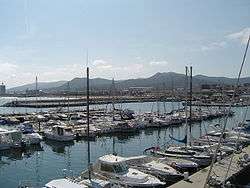 Port of Mataró | |
 Flag 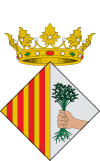 Coat of arms | |
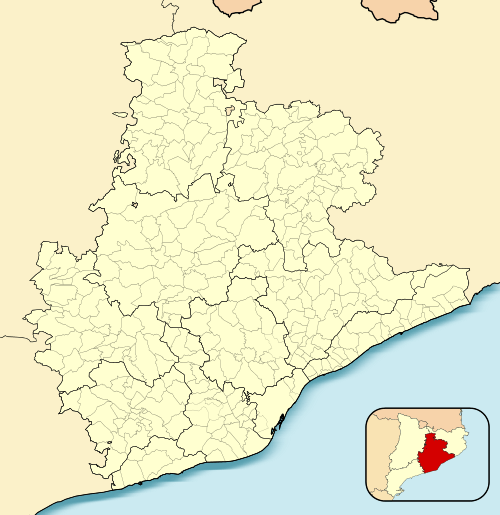 Mataró Location of Mataró within the Province of Barcelona  Mataró Location of Mataró within Catalonia  Mataró Location of Mataró within Spain | |
| Coordinates: 41°32′N 2°27′E | |
| Country | |
| Autonomous community | |
| Province | Barcelona |
| Comarca | Maresme |
| Government | |
| • Mayor | David Boté Paz (2015)[1][2] (PSC) |
| Area | |
| • Total | 22.5 km2 (8.7 sq mi) |
| Elevation | 28 m (92 ft) |
| Population (2018)[4] | |
| • Total | 126,988 |
| • Density | 5,600/km2 (15,000/sq mi) |
| Demonym(s) | Mataroní |
| Website | mataro |
History
Mataró dates back to Roman times when it was a village known as "Iluro" or "Illuro". The ruins of a first-century BC Roman bath house (known locally as the Torre Llauder) were recently discovered and can be visited. The coastal N-II highway follows the same path as the original Roman road, Via Augusta.
Mataró was declared a city by royal decree, even though at the time (nineteenth century) the population fell short of the requirement for city status.
The first railway in peninsular Spain was the Mataró – Barcelona line which opened on 28 October 1848 by the Catalan businessman and Mataró native Miquel Biada. This line now forms part of the RENFE/Rodalies de Catalunya R1 suburban service between L'Hospitalet de Llobregat and Maçanet-Massanes. Mataró is also connected with Barcelona and Girona by the C-32 autopista (freeway) and with Granollers by the C-60 autopista.
During the 1992 Summer Olympics in Barcelona, Mataró was the starting point for the marathon events.[5]
Main sights
Mataró is the birthplace of noucentista architect Josep Puig i Cadafalch, who designed the ajuntament (town hall) and several other notable buildings in the town:
- Casa Coll i Regàs.
- Casa Parera.
- Casa Sisternes.
- El Rengle.
- La Beneficiència.
Nearby the town are the archaeological remains of the Roman villa of Can Llauder.
Agriculture
The traditional vineyards were devastated by Phylloxera in the nineteenth century and only partially replanted, due to the growth of the tourist industry and the development of irrigation in the area. Potatoes were one of the first replacement crops to be introduced, especially the Royal Kidney variety, and Mataró obtained a Denominació d'Origen in 1932.[6] Trocadero lettuce and peas are also grown, mostly for export. The production of cut flowers is less important than in other towns of the Maresme. Irrigated land made up 9.13 square kilometres (3.53 sq mi) of the 10.57 square kilometres (4.08 sq mi) of agricultural land in the municipality in 1986 (47% of the municipal territory).
Climate
Mataró has a borderline humid subtropical climate (Cfa in Köppen climate classification) bordering with a Hot-summer mediterranean climate, (Köppen Csa).
| Climate data for Mataró (data from 1931-1969) | |||||||||||||
|---|---|---|---|---|---|---|---|---|---|---|---|---|---|
| Month | Jan | Feb | Mar | Apr | May | Jun | Jul | Aug | Sep | Oct | Nov | Dec | Year |
| Average high °C (°F) | 14.0 (57.2) |
13.7 (56.7) |
15.8 (60.4) |
17.2 (63.0) |
20.3 (68.5) |
24.0 (75.2) |
26.8 (80.2) |
27.3 (81.1) |
25.1 (77.2) |
21.6 (70.9) |
16.9 (62.4) |
13.8 (56.8) |
19.7 (67.5) |
| Daily mean °C (°F) | 10.3 (50.5) |
10.2 (50.4) |
12.3 (54.1) |
14.0 (57.2) |
16.9 (62.4) |
20.7 (69.3) |
23.5 (74.3) |
23.9 (75.0) |
21.7 (71.1) |
18.0 (64.4) |
13.6 (56.5) |
10.6 (51.1) |
16.3 (61.3) |
| Average low °C (°F) | 6.7 (44.1) |
6.7 (44.1) |
8.9 (48.0) |
10.7 (51.3) |
13.5 (56.3) |
17.3 (63.1) |
20.2 (68.4) |
20.4 (68.7) |
18.2 (64.8) |
14.5 (58.1) |
10.4 (50.7) |
7.4 (45.3) |
12.9 (55.2) |
| Average precipitation mm (inches) | 33 (1.3) |
53 (2.1) |
50 (2.0) |
45 (1.8) |
66 (2.6) |
42 (1.7) |
27 (1.1) |
33 (1.3) |
56 (2.2) |
91 (3.6) |
74 (2.9) |
35 (1.4) |
605 (24) |
| Source: Sistema de Clasificación Bioclimática Mundial[7] | |||||||||||||
Festivals, celebrations and events
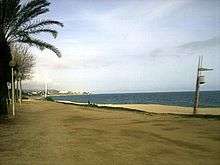
Several major events are celebrated annually in Mataró. Some of them are also celebrated in the rest of Catalonia and others, which have a religious origin, are part of the folklore and traditions of Spain and some other countries. Among all of them the most popular ones are:
- The three wise men in Mataró.
- Carnival in Mataró: celebrated immediately before Lent.
- Easter in Mataró: celebrated every year during one week on a movable date from the end of March to the very beginning of May
- Saint George in Mataró: celebrated on 23 April. It is a big celebration although it is not a bank holiday.
- St. John the Baptist in Mataró: celebrated on 24 June
- Les Santes: local festivity of the city celebrated at the end of July. It involves the recognition of Saint Juliana and Saint Semproniana.
- The caga Tió: celebrated in Catalonia on Christmas’ Eve, 24 December.
- Mataró also celebrates several fairs such as:Tres Tombs and Saint Ponç In May it is celebrated a fair called Mercat de Sant Ponç. At the fair handicraft products, medicinal herbs, natural products like: honey, cheese, fruits, flowers, jam and salami are sold. Sant Ponç is the patron saint of the herbalists and bee keepers. The fair has been done for centuries. Its origins date to the 16th century, when in Spring herbalists took medicine to the sick. Today Sant Ponç fair is celebrated to preserve the antique customs.
- Festival "Cultural Crossroad".
- International Dance Festival "Days of Dance".
Twin towns






References
- New Municipal Team Archived 17 July 2011 at the Wayback Machine (in Catalan)
- "Ajuntament de Mataró". Generalitat of Catalonia. Retrieved 13 November 2015.
- "El municipi en xifres: Mataró". Statistical Institute of Catalonia. Retrieved 23 November 2015.
- Municipal Register of Spain 2018. National Statistics Institute.
- 1992 Summer Olympics official report. Archived 28 May 2008 at the Wayback Machine Volume 2. pp. 204-6.
- Source: Catalan Wikipedia. This Denominació d'Origen is not currently (2006) protected at European Union level (see list Archived 17 January 2007 at the Wayback Machine).
- "ESP BARCELONA - MATARO".
- Panareda Clopés, Josep Maria; Rios Calvet, Jaume; Rabella Vives, Josep Maria (1989). Guia de Catalunya, Barcelona: Caixa de Catalunya. ISBN 84-87135-01-3 (Spanish). ISBN 84-87135-02-1 (Catalan).
External links
| Wikimedia Commons has media related to Mataró. |
- Official website
- Government data pages (in Catalan)
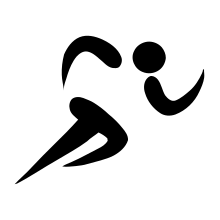
.svg.png)